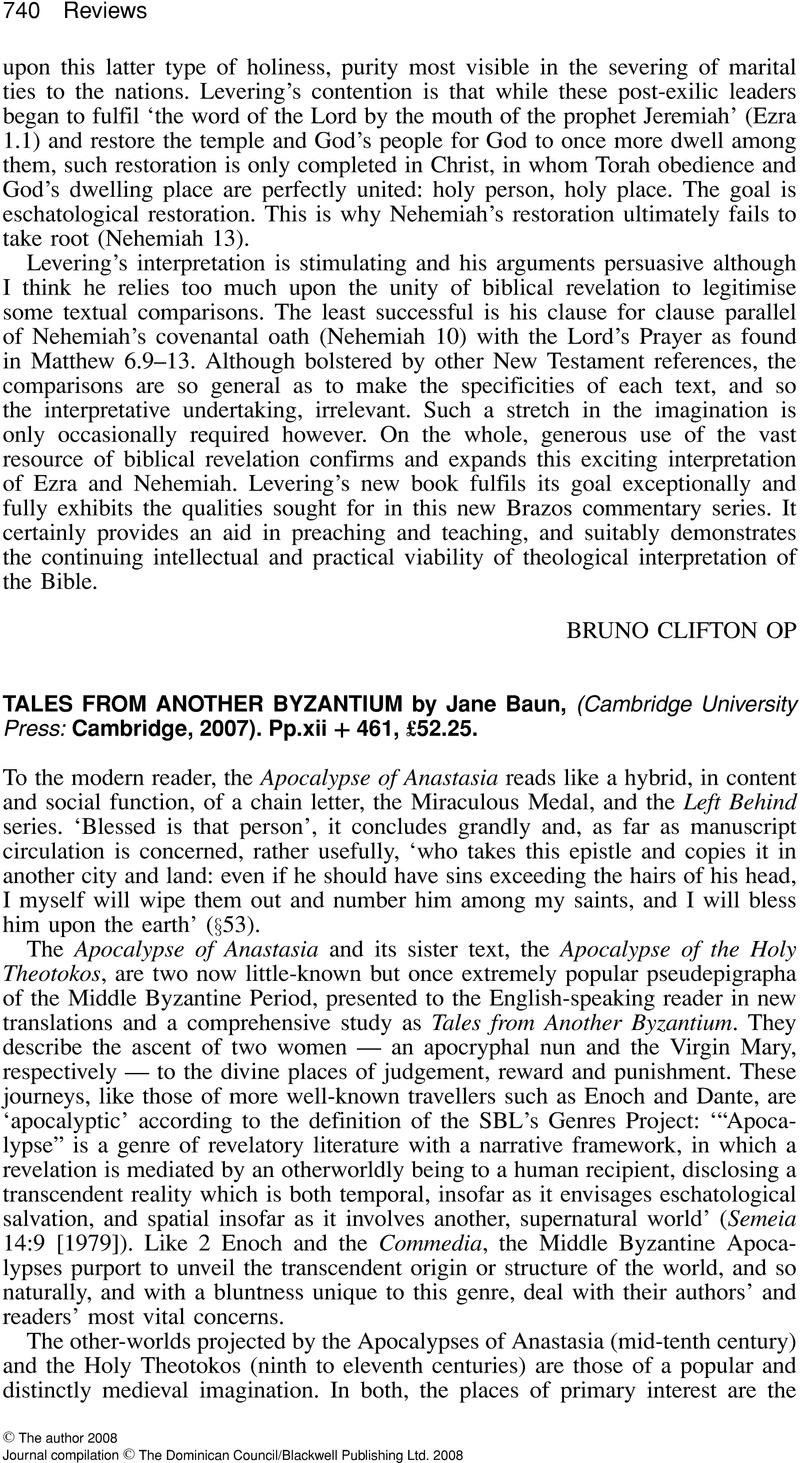No CrossRef data available.
Article contents
Tales From Another Byzantium by Jane Baun, (Cambridge University Press: Cambridge, 2007). Pp. xii + 461, £52.25.
Review products
Tales From Another Byzantium by Jane Baun, (Cambridge University Press: Cambridge, 2007). Pp. xii + 461, £52.25.
Published online by Cambridge University Press: 01 January 2024
Abstract
An abstract is not available for this content so a preview has been provided. Please use the Get access link above for information on how to access this content.

- Type
- Reviews
- Information
- Copyright
- Copyright © The author 2008. Journal compilation © The Dominican Council/Blackwell Publishing Ltd. 2008


